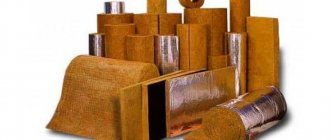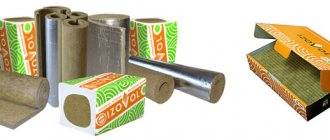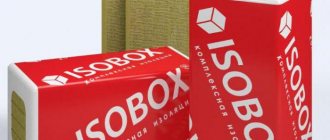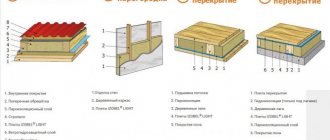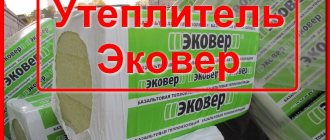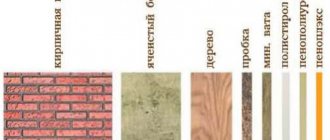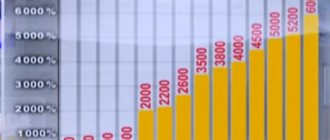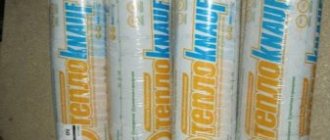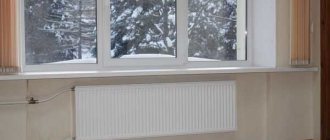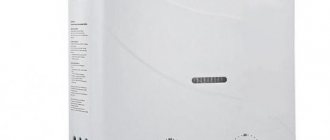Basalt wool 1000x500x50 mm. Photo Teplokontakt
There is a wide variety of basalt materials for insulation on the market, so potential buyers often have doubts about their quality and properties. Various equipment and manufacturing technologies, the level of qualifications of employees directly affect the characteristics of the finished product.
Therefore, many Internet users are interested in : which basalt wool is better? What features and properties are inherent in materials of different brands? What list of products do different companies offer? The answers to these and other questions are presented in the article.
Satisfied
I am rebuilding a private house and adding additional rooms. The house is located in an open area, the wind constantly blows through it, so in winter it is always cool inside. It became clear that there was no way to solve this problem without insulating the walls. Friends advised me to use glass wool, but I wanted to buy something newer and better for my home.
I found the website of the First House company, several types of modern insulation are presented there. The store salesperson recommended using Technofas Cottage basalt insulation for my purposes. It has such advantages as: fire resistance, service life up to 50 years, heat and sound insulation, waterproof, conducts steam and is resistant to rodents and insects.
For me, these factors became decisive and I began to insulate the house with the help of Technofas Cottage products. The house became warmer and quieter thanks to sound insulation. Overall I was pleased.
Production of thermal insulation
Basalt rocks are used as raw materials for the manufacture of thermal insulation boards. Under the influence of a temperature of 1500 degrees, the material melts, after which it is pulled using a centrifuge into thin fibers. During the manufacturing process, impurities are added to the raw materials, including water-repellent components. An automated stacker weaves the fibers into a web of varying thicknesses, which is then pressed and cut into slabs of specified sizes.
The production technology is designed in such a way that the resulting thermal insulation fully complies with the manufacturer’s specifications and is environmentally friendly and safe for human health.
The dimensions of the thermal insulation material vary depending on the type and purpose of the product. Thus, the thickness of the slabs varies from 20 to 200 mm, length - 500 or 600 mm, width - 1000 or 1200 mm.
Basalt wool is a reliable heat keeper!
I live in a private house, and since our family is gradually growing, we have to add additional rooms. The children's bedroom had to be built on the wrong side, where a strong wind blew in winter, and after the first winter it became clear that without insulation of the walls the room would always be cool.
The first thought was traditional glass wool; it was also recommended by parents who had not even heard of other insulation materials. But the salesman in the store talked about the basalt wool that was used to build the store.
The main advantage of the purchase was the fact that basalt thermal insulation can be installed not only on the wall, but also on the roof, pipes and various floors.
We used basalt insulation almost everywhere: on the walls, on the floor, in the attic. It turned out that this was a bit of an expensive pleasure, but it’s been a year since we completed perestroika, and we just can’t be happier. The heat in the house lasts longer, and the walls that were constantly damp are finally dry!
Product line
The density of Isoflor allows it to be laid under a concrete screed or decorative floor. The Isoroc line of wall insulation contains several subtypes, focused on the characteristics of the surfaces being protected and various areas of application. It includes the following items:
- Izolight-L;
- Isovent;
- Isofrol;
- Izoruf in packs;
- Isorok in slabs (in cylindrical shapes).
Samples of Izolight-Lux products have a density of 60 kg/cubic meter. meter and are used to insulate surfaces of various orientations. At the same time, large loads and deformation stresses in the layers of products of this type are unacceptable. The next model in the series, Isovent-L, has a significantly higher density (up to 90 kg/cubic meter) and is used for arranging ventilation for building facades.
For the Isoflor modification, the density indicated by the manufacturer is close to 140 kg/cubic meter. m. This insulation is used as an intermediate link in three-layer reinforced concrete structures. Can be used in sandwich panels. For thermal insulation of roofs and concrete floors, another type of insulation material called Izoruf is used. It is produced with the markings H, B or NL, and its average density is 110 kg/cubic meter. meter. Blanks of this material or mats without a piercing shell are marked as “MP”, and if it is present – “MP (ST)”.
Isorok insulation in slabs has two modifications with a material density of 75 and 100 kg/cubic. per meter respectively. They are optimally suited for protecting any horizontal surfaces, but do not allow the load to exceed the maximum level. Isorok Cylinders, marked CF, are considered as a separate category of heat insulators. Various samples of these products differ in the diameter of the cylindrical blanks (ranging from 18-273 mm) and are used for insulating cold water and hot water pipes.
Information about the manufacturer Isorok
Izorok products are manufactured in compliance with European standards. The date of appearance of the Russian brand “Izorok” is considered to be 2000, when a large association was created on the basis of the Tambov Mineral Insulation Plant. The further development of this production was supported by investments coming from a number of foreign companies.
Over time, Isorok mineral wool has become a very popular product, in demand in most areas of construction technology.
To expand the volume of mineral wool production, the association needed:
- significantly expand its production areas;
- acquire modern equipment that allows you to automate the work process;
- master new technologies for waste-free production of insulation products.
Thermal insulation Isorok is made on the basis of the finest fibers from a melt of mineral rocks, the individual components of which are held together by a special binder. The need to comply with all the subtleties of the technological chain stimulated the concern's engineers to constantly improve this process. Today it belongs to the undisputed leaders of the Russian market of insulation materials.
Main characteristics
- Density is a characteristic that shows how many kilograms of stone fiber are contained in 1 cube of mineral wool. The denser the material, the better its insulating properties and the higher the price.
- Thermal conductivity is the ability of a material to conduct heat. The lower the coefficient, the more effective the insulation.
- Flammability is the ability to burn independently.
Environmental friendliness depends on the origin of the binder. Artificial resins are toxic, natural substances are harmless.
Tips for choosing
You need to choose the material based on your goals and objectives. The characteristics of thermal insulators should be taken into account, because some are not suitable for hot rooms, while others tolerate moisture and elevated temperatures well. In addition, some bulk insulation materials are very hard and are suitable as a substrate or base for a floor.
In any case, one general piece of advice can be given; it concerns the fact that it is worth purchasing these thermal insulators in trusted places with good reviews, so as not to run into fake or low-quality products.
In general, it must be objectively admitted that bulk insulation materials are very attractive in terms of prices. We also must not forget about their durability; classic mineral wool will last no more than ten years or twenty at best. And for bulk insulation materials, the service life is much longer, many times!
You also need to understand that not all bulk thermal insulators are the same. They differ in their properties. Certain tasks require certain materials. If you are in doubt about your choice, then contact a specialist with this question; he will be able to advise you on the right materials.
For example, expanded clay is not suitable as the main insulation in regions with extremely harsh winters (frosts of 40 degrees). This needs to be taken into account. In addition, there are many other nuances, which is why consultation with specialists is extremely important for each individual case.
Paroc (Tver region)
Finnish insulation material Paroc with Swedish roots. Known for its impressive range and decent technical characteristics. Since 2013, full-fledged production of Paroc mineral wool has been established in the Russian Federation.
Plate and roll materials, thermo-wound cylinders, pressed bends and segments from the conveyor belt of a Russian plant have the same indicators as imported insulation. Packed in the same shrink film.
Paroc mineral wool is suitable for:
- roof insulation (ROB);
- foundation and floor (GRS);
- internal walls and partitions (Extra Light);
- façade (WAS), fire protection (FPS) and soundproofing (SSB) systems.
The impressive list of options for the general construction plan is complemented by materials from the category of technical insulation (Pro, Hvac), for heating and ventilation systems, large-scale technological processes, and industrial equipment.
The positive features of Paroc mineral wool are laid down at the structural level - the material is elastic and does not break (and therefore does not generate dust) during installation. Many compatriots will appreciate the manufacturer’s offer to produce the required batch according to the customer’s dimensions.
The disadvantages of cooperation include the relatively high cost and the need for a thorough study of the offered range.
The choice is large, so in the event of an unintentional mistake, there is a high probability of unjustified cost overruns. Main characteristics of Paroc
| PAROC eXtra | PAROC WPS 3n | PAROC GRS 20 | |
| Purpose | Insulation of facades and walls under plaster | Thermal insulation of a ventilated facade | Insulation of floors using joists and soil |
| Dimensions, mm | 1 220x555x50 | 1 200х600х30-70 | 1 200x600x50-140 |
| Density, kg/m³ | 30 | 100 | 90 |
| Thermal conductivity, W/(m K) | 0.04 | 0.04 | 0.037 |
| Quantity per package(pieces/m²/m³) | 14 / 10.42 / 0.521 | Depends on the dimensions of the material | |
| Price, rub/m³ | 2 156 | 6 703 | 5 750 |
Video about Paroc products:
